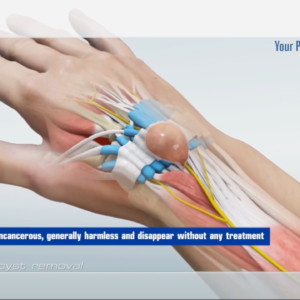Description
Familiarity with treatment
The posterior lift is a surgical procedure used to address various spinal pathologies, particularly degenerative diseases. It is a type of lumbar interbody fusion (LIF) technique that allows access to both the anterior and posterior columns of the spine through a single incision in the back 1.
Here is a general overview of the posterior lift procedure based on the information from the search results:
Approach and Incision: The posterior lift is performed using a posterior approach, which is familiar to most spine surgeons. A single incision is made in the back, allowing access to the lumbar spine 1.
Preparation of the Intervertebral Space: After the incision is made, the surgeon cleans the intervertebral space and prepares it for fusion. This may involve using shavers or curettes to remove any damaged or degenerated tissue 1.
Insertion of Cage or Bone Graft: Trial spacers are used to measure the intervertebral space, and then a cage or bone graft is inserted into the space through annulotomy procedures. This helps promote fusion between the adjacent vertebrae 1.
Supplemental Pedicle Screw and Rod Constructs: To provide stability and support during the healing process, supplemental pedicle screw and rod constructs may be applied. These implants help maintain proper alignment and promote fusion.
Who is it suitable for?
The posterior lift procedure is typically suitable for individuals who have specific spinal pathologies, particularly degenerative diseases, that require surgical intervention. It is commonly used for lumbar interbody fusion (LIF) to address conditions such as disc degeneration, spinal stenosis, or spondylolisthesis.
While the search results did not provide specific information about the suitability of the posterior lift for certain individuals, it is generally recommended for those who have not responded to conservative treatments such as medication, physical therapy, or injections. The decision to undergo a posterior lift is typically made after a thorough evaluation by a qualified spine surgeon who will assess the patient’s condition, medical history, and imaging studies.
Who is it not suitable for?
While the posterior lift procedure can be beneficial for many individuals with specific spinal pathologies, there are certain situations where it may not be suitable. The following are some factors that may make a person unsuitable for the posterior lift procedure:
Unstable Spine: If the spine has severe instability, such as excessive movement between vertebrae, the posterior lift procedure may not be appropriate. In such cases, additional stabilization techniques may be necessary.
Poor Bone Quality: Individuals with poor bone quality, such as osteoporosis or osteopenia, may have diminished bone strength and density, which can affect the success of spinal fusion procedures. In these cases, alternative procedures or additional interventions may be considered.
Uncontrolled Medical Conditions: Patients with certain uncontrolled medical conditions, such as uncontrolled diabetes, heart disease, or infections, may not be suitable candidates for the posterior lift procedure. These conditions can increase the risk of complications during or after surgery.
Smoking or Tobacco Use: Smoking or using tobacco products can negatively impact the healing process and increase the risk of complications. Surgeons may advise patients to quit smoking before undergoing the posterior lift procedure.
Inadequate Recovery Capacity: Some individuals may have limited recovery capacity due to age, overall health, or other factors. In these cases, the risks of the procedure may outweigh the potential benefits, and alternative treatment options may be considered.
Advantages
The posterior lift procedure offers several advantages for individuals with specific spinal pathologies. Here are some potential benefits based on the information from the search results:
Improved Stability and Alignment: The posterior lift procedure aims to stabilize the spine and improve alignment. By addressing degenerative conditions or spinal pathologies, it can help restore stability and correct any misalignments, which may alleviate pain and improve overall function.
Enhanced Fusion Rates: Posterior lift procedures, particularly posterior lumbar interbody fusion (LIF), have been associated with good fusion rates. Fusion is the process of joining two or more vertebrae together, promoting spinal stability and reducing the risk of further degeneration or movement between the vertebrae.
Reduced Risk of Neural Injury: While all surgical procedures carry some risks, the posterior lift technique has been developed to minimize the risk of iatrogenic (procedure-related) injury to neural structures. Surgeons take precautions to protect the nerves and paraspinal muscles during the procedure.
Potential for Minimally Invasive Surgery: The posterior lift procedure can be performed using minimally invasive techniques, which may offer advantages such as smaller incisions, reduced blood loss, shorter hospital stays, and faster recovery compared to traditional open surgery. Minimally invasive approaches can also result in less postoperative pain and scarring.
Improved Posture and Everyday Function: Addressing spinal pathologies through the posterior lift procedure can help improve posture and support everyday movements. This may be particularly beneficial for individuals who spend long periods sitting or have physically demanding lifestyles.
Complications
Like any surgical procedure, the posterior lift surgery carries potential risks and complications. Here are some complications that may be associated with the posterior lift procedure, as mentioned in the search results:
Infection: Surgical site infections can occur after the posterior lift procedure. Steps are taken to minimize the risk of infection, such as proper sterile techniques and antibiotic prophylaxis, but infections can still occur.
Neurological Injury: There is a risk of injury to the nerves during the posterior lift procedure. This can result in temporary or permanent nerve damage, leading to sensory or motor deficits.
Bleeding: Posterior lift surgery involves making incisions and manipulating tissues, which can lead to bleeding. While measures are taken to control bleeding during the procedure, excessive bleeding can occur and may require additional interventions.
Poor Wound Healing: Some individuals may experience delayed wound healing or wound complications after the posterior lift procedure. Factors such as poor blood supply, infection, or other underlying medical conditions can contribute to this complication.
Deep Vein Thrombosis (DVT): DVT is a potential complication after any surgery, including the posterior lift procedure. It refers to the formation of blood clots in deep veins, typically in the legs. These clots can be dangerous if they travel to the lungs, causing a pulmonary embolism.
Pain and Discomfort: Postoperative pain and discomfort are common after the posterior lift procedure. Adequate pain management strategies are employed to help alleviate pain, but individual experiences may vary.
Scar Formation: Scarring is an inherent part of any surgical procedure. The size and appearance of scars can vary depending on factors such as individual healing ability, surgical technique, and postoperative care.
preoperative care
Preoperative care refers to the physical and psychosocial care provided to patients before undergoing surgery. The goal of preoperative care is to ensure the patient’s safety and optimize their overall well-being before the surgical procedure. While the search results did not provide specific details about preoperative care, here are some general aspects that may be included:
Medical Assessment: A thorough medical assessment is conducted to evaluate the patient’s overall health and identify any pre-existing medical conditions or risk factors that may impact the surgery. This assessment may involve reviewing the patient’s medical history, conducting physical examinations, and ordering relevant tests or investigations.
Patient Education: Patients are provided with information about their upcoming surgery, including details about the procedure, expected outcomes, potential risks and complications, and postoperative care instructions. This education helps patients understand what to expect and actively participate in their own care.
Preoperative Testing: Depending on the patient’s medical condition and the type of surgery, various preoperative tests and clinical assessments may be performed. These tests can include blood work, imaging studies, electrocardiograms (ECGs), and consultations with other specialists if needed.
Medication Management: The healthcare team reviews the patient’s current medications and may make adjustments or provide specific instructions regarding medication use before and after surgery. This includes managing any necessary medication adjustments, such as stopping or adjusting the dosage of certain medications that may interfere with the surgical procedure or anesthesia.
Preparation for Anesthesia: If the patient will receive anesthesia during the surgery, preoperative care includes assessing the patient’s anesthesia fitness, discussing anesthesia options, and providing instructions for fasting before the procedure.
Preoperative Instructions: Patients are given specific instructions to follow before the surgery, such as fasting guidelines, restrictions on eating or drinking, and guidelines for taking prescribed medications. They may also be advised on preoperative hygiene practices, such as bathing with antiseptic soap.
Emotional Support: Preoperative care includes addressing the patient’s emotional well-being and providing support to alleviate anxiety or concerns related to the surgery. This may involve counseling, relaxation techniques, or involving the patient’s support system.
Postoperative care
Postoperative care refers to the care and support provided to patients after they have undergone a surgical procedure. The primary goal of postoperative care is to promote healing, manage pain, prevent complications, and support the patient’s recovery. While the search results did not provide specific details about postoperative care, here are some general aspects that may be included:
Monitoring Vital Signs: Patients are closely monitored in the immediate postoperative period to assess their vital signs, such as heart rate, blood pressure, respiratory rate, and temperature. This helps identify any potential complications or changes in the patient’s condition.
Pain Management: Adequate pain management is essential for patient comfort and recovery. Depending on the type and intensity of pain, various pain management techniques may be employed, including oral or intravenous pain medications, local anesthetics, patient-controlled analgesia (PCA) pumps, or non-pharmacological interventions such as relaxation techniques or ice packs.
Wound Care: The healthcare team monitors and manages the surgical incision site to ensure proper healing and prevent infection. This may involve regular dressing changes, wound cleaning, and assessment for signs of infection or complications.
Mobility and Ambulation: Early mobilization and ambulation are encouraged to prevent complications such as blood clots, promote circulation, and enhance recovery. The healthcare team may provide assistance, guidance, and physical therapy if needed.
Diet and Nutrition: Depending on the surgical procedure and the patient’s condition, specific dietary guidelines may be provided. This may include instructions on when to resume eating, types of foods to consume or avoid, and any dietary restrictions or modifications.
Fluid and Medication Management: The healthcare team monitors the patient’s fluid balance and administers intravenous fluids or medications as needed. Medications may include antibiotics to prevent infection, medications for pain management, or medications to manage other specific conditions or complications.
Patient Education and Discharge Planning: Patients and their caregivers are provided with education and instructions regarding postoperative care, including wound care, medication management, activity restrictions, and signs of potential complications. Discharge planning may involve arranging follow-up appointments, providing written instructions, and addressing any concerns or questions.
Emotional Support: Postoperative care includes addressing the patient’s emotional well-being and providing support during the recovery process. This may involve counseling, emotional support, and involving the patient’s support system.




Reviews
There are no reviews yet.